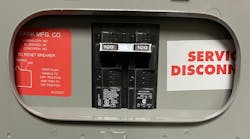Informative Annex Q is titled, “Human Performance and Workplace Electrical Safety.”
Q.1 identifies six risk control methods in a hierarchical list (do number one first, then number two, and so on).
Q.2 identifies five principles of human performance:
- Everybody is fallible and makes mistakes.
- We can predict error-likely situations and conditions. Even better, we can manage and/or prevent them.
- Organizational processes and values influence individual performance. Thus, you can help improve human performance by tuning the processes and values of your organization.
- Leaders, peers, and subordinates who encourage others help them to achieve high levels of performance. This encouragement and reinforcement plays a large role in elevating achievement.
- If you understand the reasons a given mistake occurred (or might occur) and apply the lessons learned from past incidents, you can avoid repeating (or incurring) those mistakes.
Mistakes are simply a reality. They will happen. We can reduce both their likelihood and their consequences by thinking through why they happen and making the necessary adjustments. Doing this elevates our performance baseline. To increase performance from there, we can help everyone in our organization by providing a positive and supportive environment.
Look for what your leaders, peers, and subordinates are doing right and compliment them on that. Make a habit of doing this often but be specific.
Look for what difficulties they face and express your confidence in them. A simple, “You can do this,” is often all that’s needed.
Finally, don’t bring negative energy into the workplace. If someone asks how you are doing, you could complain about the argument you had with your spouse. Or, you could smile and say, “I’m doing great. I’m doing a job I love with people I respect. Thanks for asking!” Which answer do you think would help boost performance of your team?




